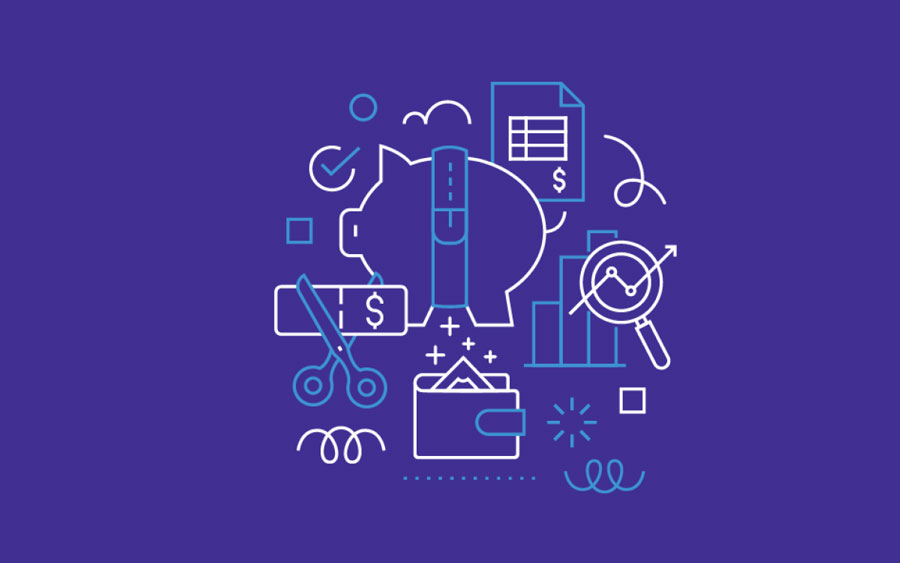Erik Carlin, co-founder and CPO at ProsperOps, recently joined the FinOps Guys podcast to share his take on FinOps metrics including Effective Savings Rate (ESR). The discussion centered on the evolution of automated cloud financial management and the establishment of a metric to track true cloud savings.
Read on to learn why ProsperOps has introduced ESR as the single most important cloud savings metric
Bringing Robo-Advisory Technology to Cloud Financial Management
During his time at Rackspace, Erik experienced first-hand the challenges with cloud rate optimization (one of the FinOps domains). Legacy tooling helped with visibility and reporting, but still relied heavily on human expertise to deliver savings outcomes to customers. He believed better outcomes could be achieved with AI and automation.
“I think what we’re going to see is the emergence of software that not only provides reporting and visibility, but actually does the work of delivering the outcome,” said Carlin. “So the focus of ProsperOps is really to take software and use it to deliver better FinOps outcomes.”
This evolution in FinOps is similar to the personal finance world, where robo-advisory platforms are actually executing portfolio changes to achieve financial gains and mitigate risks. The ProsperOps platform has three fundamental components that enable it to bring robo-advisory capabilities to FinOps:
- Data Ingestion: real-time cost and usage data from the cloud
- Algorithms: analyzing data to determine ideal cost savings outcomes
- Execution Engine: purchasing or manipulating cloud discount instruments
The Need for a Better FinOps Metric
Public cloud providers offer a comprehensive and powerful array of services, and give users the power to use them flexibly, but discount instruments are rigid and difficult to understand. On top of that, managing cloud discount instruments is complex, making it challenging to achieve ideal cost savings.
While ProsperOps was created to automate savings outcomes, Erik said the company also needed a better way to measure performance. Traditional FinOps metrics like coverage and utilization don’t tell the full story of how much an organization is actually saving on cloud costs.
Carlin describes cloud cost optimization in two separate FinOps universes: engineering to include rightsizing EC2 instances eliminating waste, and financial instruments like AWS Savings Plans and Reserved Instances. Coverage measures what percentage of on-demand usage is offset by discount instruments, while utilization tracks the percentage of time these discount instruments are utilized.
“You’ve got these two metrics that measure the two universes independently, and they’re certainly helpful as input metrics,” said Erik. “But there are many cases where you can have 100% coverage and 100% utilization, but still be drastically sub-optimized.”
ProsperOps has established a key FinOps metric that not only brings together the engineering and financial universes, but also paints a true picture of savings. This metric gives cloud FinOps practitioners an objective measurement to definitively understand whether or not they are achieving optimal results.
Breaking Down Effective Savings Rate
Whereas coverage and utilization are input metrics, Effective Savings Rate (ESR) is an output metric for cloud savings — much like ROI is an output metric for profitability. It measures savings compared to what you would have spent without any discounts or optimizations.
ESR has three components: coverage, utilization and blended discount rate. A maximum ESR is achieved when coverage and utilization are as close to 100% as possible and the discount rate is as high as possible. The higher all three of these components are, the higher ESR will be. Together, 100% coverage, 100% utilization, and a high blended discount rate will all work together to produce a high ESR.
“The beauty of Effective Savings Rate is that it’s a single KPI that you can optimize for, and that will always result in the most savings,” said Carlin. “This makes it a metric that everybody should understand, measure and optimize for.”
Although ProsperOps measures ESR automatically, anyone can calculate the metric themselves. The FinOps Foundation along with tools like CloudZero and CloudHealth all recognize and are starting to incorporate ESR. It’s also important to note that ESR is cloud-agnostic, so organizations can use the metric to optimize their cloud spending on AWS, Azure or Google Cloud Platform (GCP).
Lastly, ESR can be scoped as desired — e.g., just to include compute discount instruments, or scoped to include other cost savings or discount programs, too. If you want to learn more about ProsperOps and the ESR metric, listen to the full FinOps Guys podcast: What’s new in Cloud FinOps?
Interested in calculating your ESR? We’ll do it for you! Get a free Savings Analysis.




